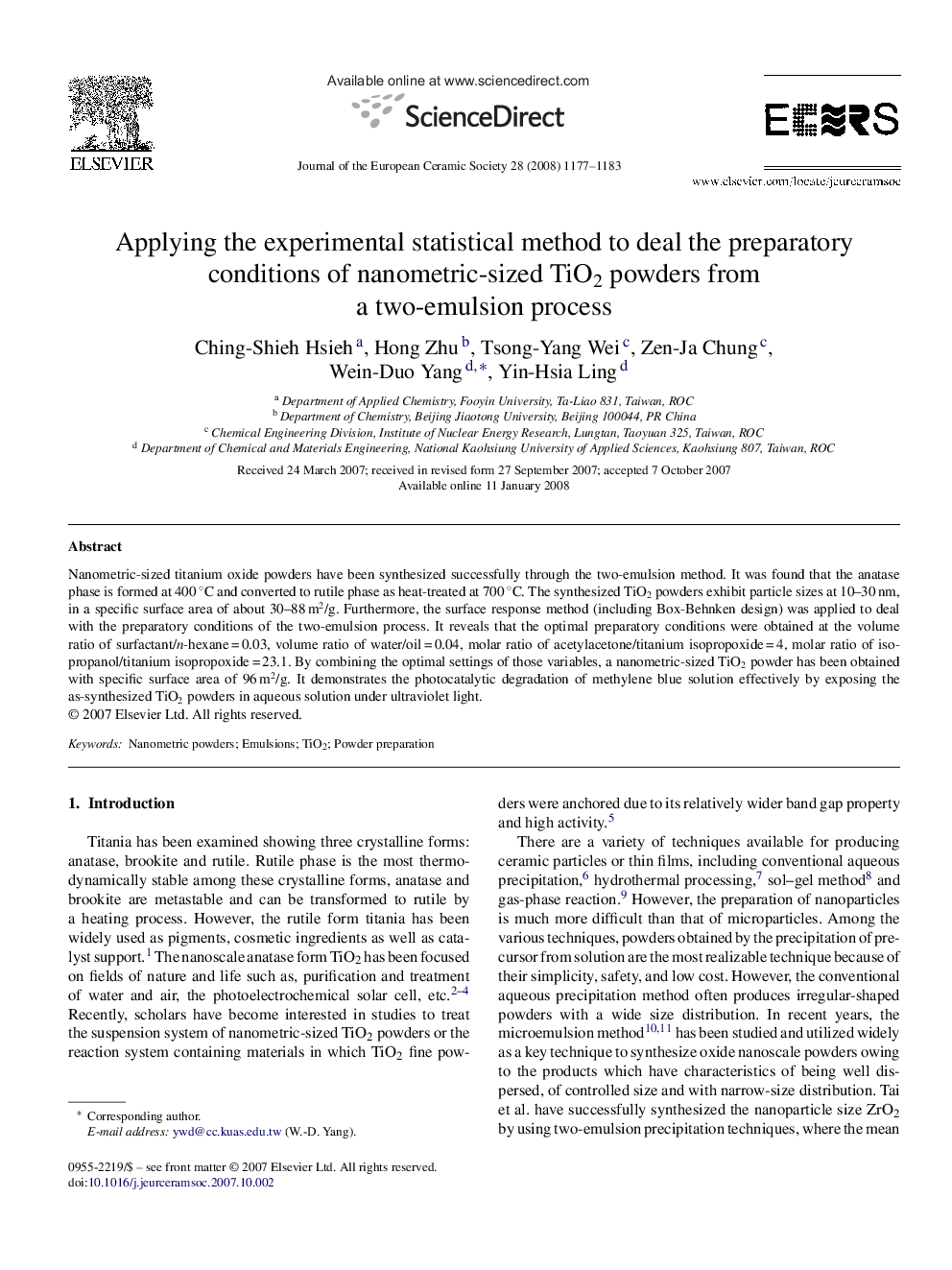| Article ID | Journal | Published Year | Pages | File Type |
|---|---|---|---|---|
| 1476852 | Journal of the European Ceramic Society | 2008 | 7 Pages |
Nanometric-sized titanium oxide powders have been synthesized successfully through the two-emulsion method. It was found that the anatase phase is formed at 400 °C and converted to rutile phase as heat-treated at 700 °C. The synthesized TiO2 powders exhibit particle sizes at 10–30 nm, in a specific surface area of about 30–88 m2/g. Furthermore, the surface response method (including Box-Behnken design) was applied to deal with the preparatory conditions of the two-emulsion process. It reveals that the optimal preparatory conditions were obtained at the volume ratio of surfactant/n-hexane = 0.03, volume ratio of water/oil = 0.04, molar ratio of acetylacetone/titanium isopropoxide = 4, molar ratio of isopropanol/titanium isopropoxide = 23.1. By combining the optimal settings of those variables, a nanometric-sized TiO2 powder has been obtained with specific surface area of 96 m2/g. It demonstrates the photocatalytic degradation of methylene blue solution effectively by exposing the as-synthesized TiO2 powders in aqueous solution under ultraviolet light.
